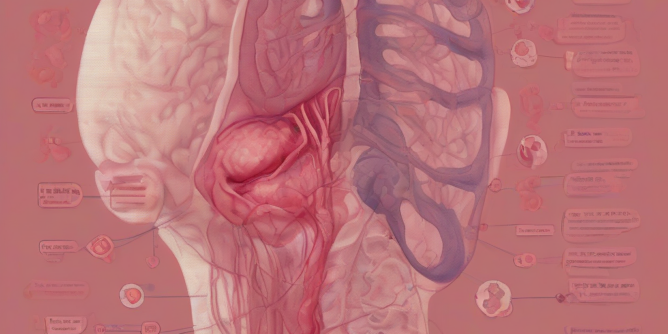
Placenta Donation: A Comprehensive Exploration of the Pros and Cons
The placenta, often referred to as the “afterbirth,” is a vital organ during pregnancy. After childbirth, its role is complete, and disposal options include burial, cremation, or donation. Placenta donation, while relatively new, is gaining attention as a potential source of valuable biological materials with the potential to revolutionize various medical fields. However, like any medical procedure or donation, it carries both potential benefits and risks that require careful consideration.
The Potential Pros of Placenta Donation
1. Advancement of Medical Research
One of the most significant advantages of placenta donation is its contribution to medical research. The placenta is a rich source of stem cells, which hold immense potential for treating a wide range of diseases and injuries. Research utilizing donated placentas has already yielded promising results in areas such as:
- Treating neurological disorders: Stem cells derived from placentas are being investigated for their ability to repair damaged nerve tissue and potentially reverse the effects of conditions like Parkinson’s disease and spinal cord injuries.
- Combating cardiovascular disease: Research is exploring the use of placental stem cells to regenerate damaged heart tissue after a heart attack, improving cardiac function.
- Developing new therapies for diabetes: Placental stem cells are being studied for their potential to regenerate pancreatic cells and help manage type 1 diabetes.
- Treating autoimmune diseases: Some research suggests that placental stem cells may have immunomodulatory properties, potentially helping to treat autoimmune diseases like multiple sclerosis and lupus.
- Regenerative medicine: The potential for using placental components to regenerate damaged tissues and organs is a major focus of ongoing research.
2. Access to Valuable Biological Materials
Beyond stem cells, placentas contain various other valuable biological materials, including growth factors, hormones, and proteins. These materials have potential applications in:
- Developing new drugs and therapies: Researchers can utilize these components to create novel medications and treatment strategies for a wide range of diseases.
- Creating innovative wound healing products: Placental extracts are already being used in some wound healing products due to their regenerative properties.
- Advancing cosmetic science: Placental extracts are also being incorporated into some skincare products due to their purported anti-aging effects.
3. Ethical Considerations and Altruism
Donating your placenta is an act of altruism that can significantly benefit others. It provides a valuable resource for scientific advancement and potential therapeutic breakthroughs. This selfless act can positively impact the lives of countless individuals who may benefit from treatments developed through placental research.
The Potential Cons of Placenta Donation
1. Lack of Regulation and Standardization
One of the major drawbacks of placenta donation is the lack of uniform regulations and standardization across different regions and organizations. This inconsistency can lead to variations in the processing, storage, and handling of donated placentas, potentially affecting the quality and safety of the derived materials. The absence of standardized protocols raises concerns about the reliability and consistency of research findings based on donated placentas.
2. Potential Risks to the Donor
While generally considered safe, placenta donation is not entirely without potential risks. The process of placental collection and processing, while generally minimally invasive, carries a small risk of infection or complications. Although rare, the possibility of postpartum hemorrhage or other complications associated with the removal of the placenta should be discussed with healthcare providers.
3. Emotional Attachment and Cultural Beliefs
For some individuals, the placenta holds significant cultural or spiritual importance. The decision to donate a placenta may conflict with deeply held personal beliefs or cultural traditions surrounding the afterbirth. Open communication with family and healthcare providers is essential to address any such concerns.
4. Limited Understanding of Long-Term Effects
The relatively recent emergence of placenta donation means that the long-term effects of this practice are not yet fully understood. Further research is needed to fully assess the potential implications of placental donation on both the recipient of the derived materials and the broader environment.
5. Issues of Consent and Informed Decision-Making
Ensuring that donors are fully informed and provide truly voluntary consent is crucial. The donation process must be transparent and easily understood, allowing donors to make well-informed decisions about whether or not to donate their placenta. Clear communication from healthcare professionals is essential to avoid misunderstandings and ensure the ethical conduct of placental donation programs.
6. Storage and Transportation Challenges
Placentas are perishable biological materials, requiring careful handling, prompt processing, and appropriate storage conditions to maintain their viability and quality. Maintaining the cold chain during transportation to research facilities or processing centers poses logistical challenges and can impact the usefulness of the donated material. Efficient and reliable transportation systems are crucial for successful placental donation programs.
7. Potential for Misuse and Exploitation
Concerns exist regarding the potential for misuse or exploitation of donated placentas. Strict ethical guidelines and regulatory frameworks are essential to prevent any commercialization or unethical practices that may compromise the integrity and purpose of placenta donation programs. Transparency and accountability are crucial in safeguarding against any such misuses.
8. Financial Implications
While some programs may cover the costs associated with placenta donation, others may not. Donors should be aware of any potential financial burdens before making a decision. Transparency regarding associated costs, such as processing fees or transportation expenses, is critical to ensuring equitable access to placental donation programs.
9. Lack of widespread accessibility
Placenta donation programs may not be widely available in all geographical locations. Accessibility depends on the availability of suitable facilities and qualified personnel to handle the collection, processing, and storage of donated placentas. This limitation may restrict the overall impact of placenta donation programs on medical research and therapeutic advancements.
10. Uncertainty about future benefits
While the potential benefits of placenta donation are promising, it’s important to acknowledge that the development of new treatments and therapies is a lengthy and uncertain process. There’s no guarantee that research using donated placentas will lead to immediate or widespread breakthroughs. The future benefits remain somewhat speculative.